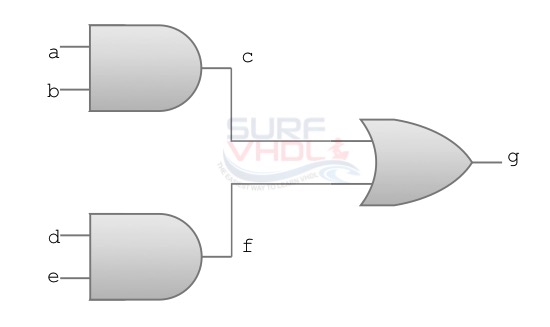The behavioral modeling describes how the circuit should behave.
For these reasons, behavioral modeling is considered highest abstraction level as compared to data-flow or structural models.
The VHDL synthesizer tool decides the actual circuit implementation.
The VHDL behavioral model is widely used in test bench design, since the test bench design doesn’t care about the hardware realization
Introduction to signal assignment
In VHDL-models, stimuli and responses occur through signals.
A signal can be declared only and exclusively in sections of concurrent code
namely the architecture declaration section between the keyword is and begin.
A signal can be assigned:
- to ports, which it is connected to
- into processes which elaborates it
The simplest of these processes is the signal assignment statement.
Signal assignment statement
It will be shown that, according to the situation in which it is used, a signal assignment statement can be used in both concurrent and sequential code sections.
Its syntax is:
T <= S;
Meaning that the target signal T takes the value of source signal S.
This statement is executed whenever signal “T” change its value.
Signal “S” is in the sensitivity list of this statement.
VHDL Behavioral Modeling Style Example
In the structural modeling style page is reported the example of and_or entity structural architecture implementation. The following VHDL code implements the same functionality using a behavioral approach:
entity and_or is port( a : in std_logic; b : in std_logic; d : in std_logic; e : in std_logic; g : out std_logic); end and_or; architecture and_or_a of and_or is -- declarative part: empty begin g <= (a and b) or (d and e); end and_or_a;
